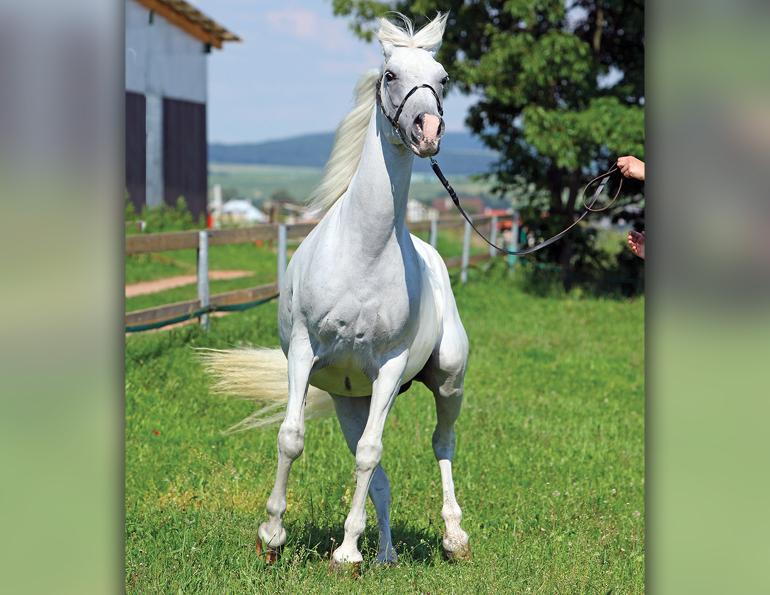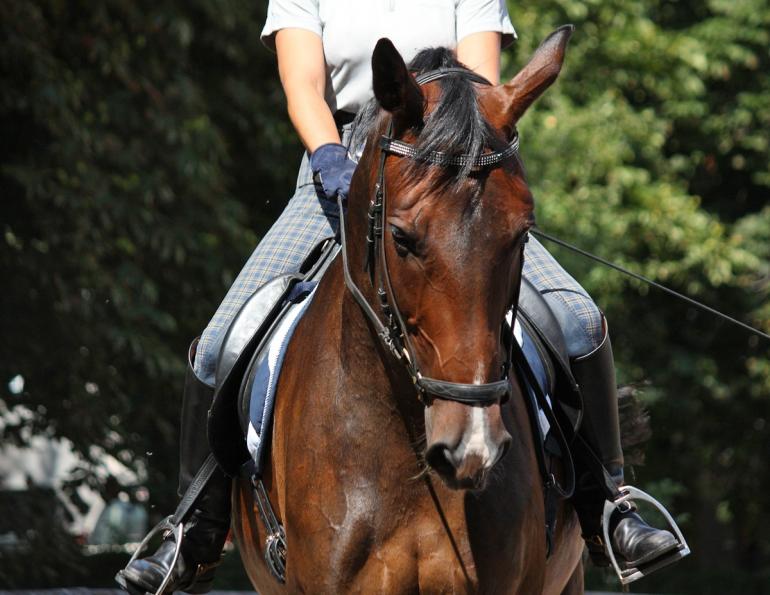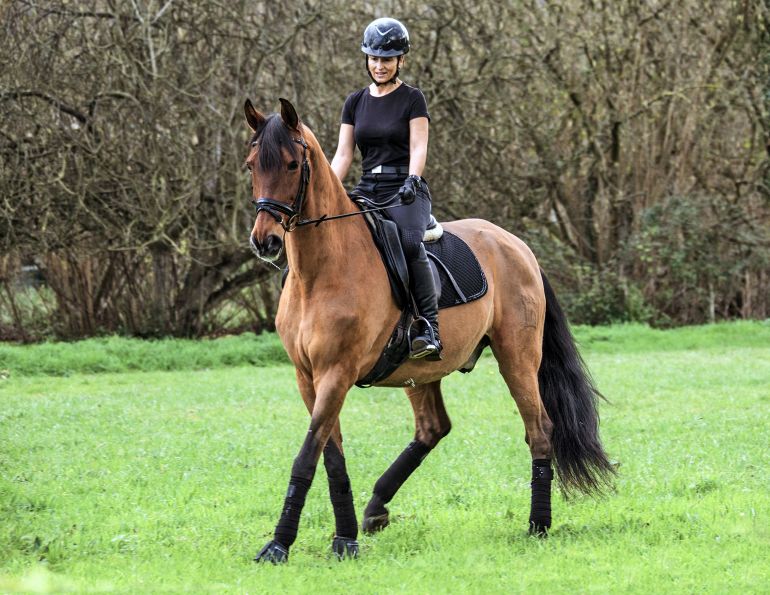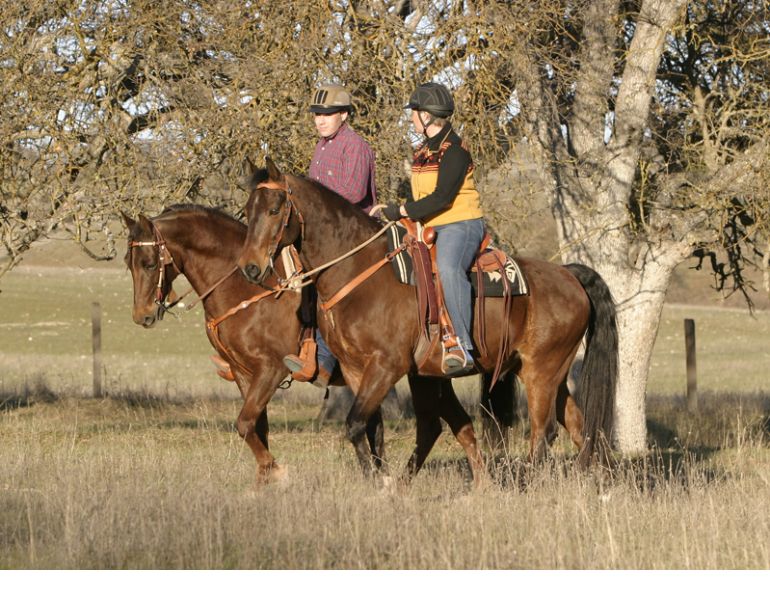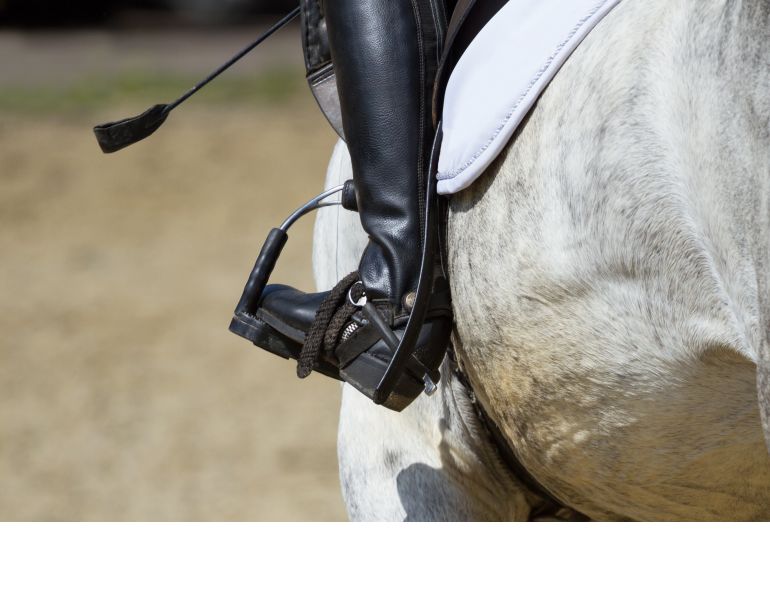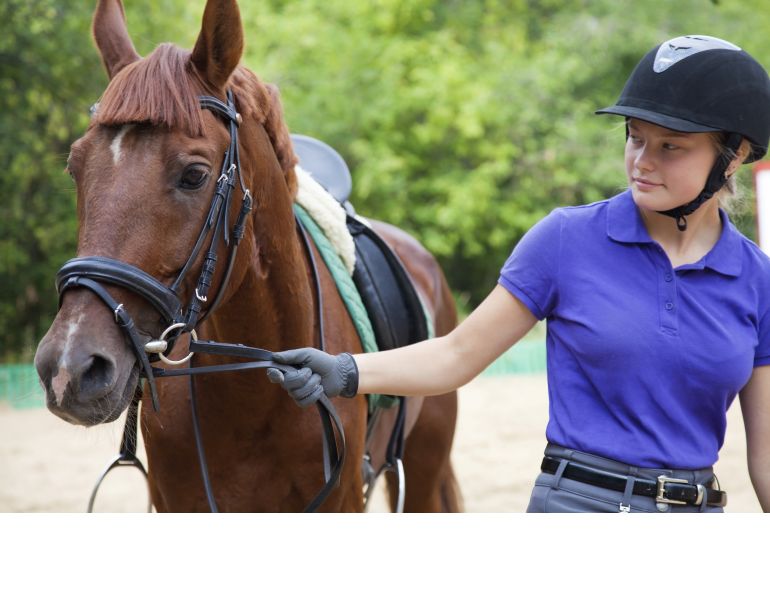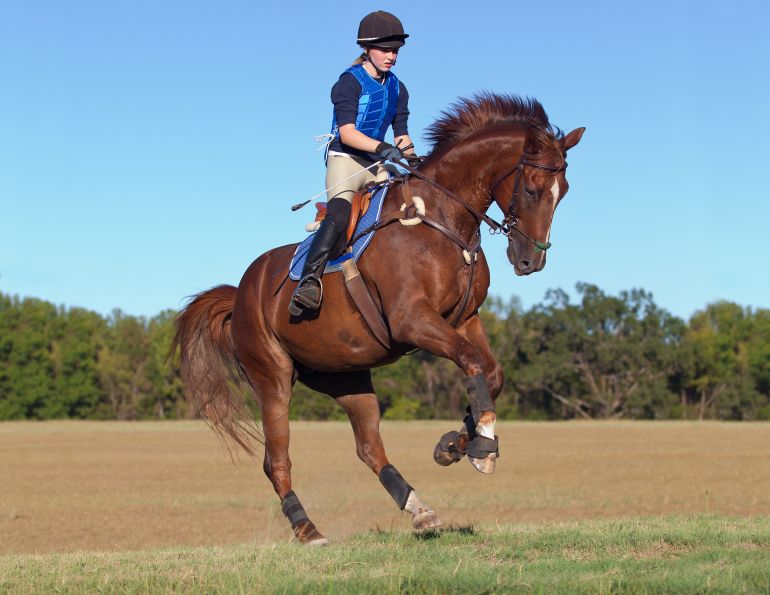The relationship between hurry and worry
By Lindsay Grice, Equestrian Canada coach and judge
My first horse rushed his jumps. He never refused. I reasoned that he was a “bold” jumper — he loved to jump and so did I! On approach to every fence, my horse’s head would elevate, his ears would perk up, and his legs would speed up. I figured the jumper ring, with its speed element, was a more natural fit for my eager jumper than the hunter ring. But once I hit the show ring, my horse’s keenness became more problematic. He’d rush past the distances, oblivious to my attempts to regulate his stride. The more I pulled, the more he sped up… and then, the more I pulled. Rails came down and I learned the precept firsthand: haste makes waste.
Years later I came to understand the real reason why horses rush, and why my horse seemed to tune out my aids.
Unplanned Acceleration
Any type of rushing, prancing, jigging, or spooking is an expression of the flight response. Horses hurry through canter transitions, scurry across trail bridges, and back off trailers in a flurry! The motivation to rush is not likely out of the joy of bridge-crossing or eagerness to have arrived at the destination. Rather, it’s to get the experience over with!
A milder version of hurry is anticipation. The ring-wise competitive horse anticipates the next step in navigating the trail gate, anticipates the gait call to canter, or anticipates the pattern in speed event classes. When rushing attempts are thwarted, the horse begins to jig.
Flight Response Explained
Horses, being prey rather than predators, opt for I’m outta here! over a logical analysis of the situation.
When spooked, a horse at liberty flees to a safe distance and checks things out from there. That scary experience is validated when flight results in escaping the object of fear. So, by increasing the distance between himself and the scary thing, fleeing the scene worked (in the horse’s mind). He eluded the sunbeam in the arena dirt before it grabbed his legs. In the next lap of the arena, he’ll seek to avoid and rush past the spot where that light beam lurks.
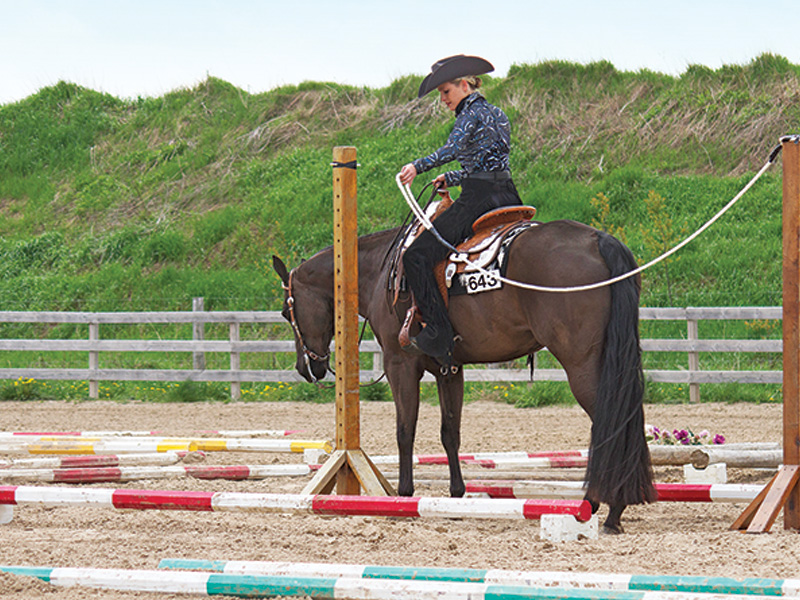
A milder version of hurry is anticipation. The ring-wise competitive horse anticipates the next step in navigating the trail gate. It’s worth the investment to train a horse to wait. Photo courtesy of Lindsay Grice
If your horse rushes into the stall, finding a safe zone there, he’s going to rush through that door again — Yikes, that was close! He escaped the nip on his rear-end from his stall neighbour reaching over the Dutch door. The associated adrenaline rush and possible skid on the cement floor only confirm that tight openings are scary indeed.
Related: Your Horse's Instincts: Reaction vs. Response
While most skills are learned by trial and error, it may only take one trial for a horse to learn something through fear. Once learned, fearful responses are not easily erased.

Every time we let horses express their flight response by scurrying across a trail bridge, rushing only confirms the fear. Remember: Slow the legs, slow the thinking. Photo: Shutterstock/Rolf Dannenberg
When a horse is frightened by a sound, sight, or sensation, less significant stimuli are ignored. That’s why when a horse is in all-out flight mode, he’s tuned out to almost everything else, even so far as to collide with a fence or scramble until injured to be free of restraint. A handler’s tugs on the lead are unlikely to interrupt a horse dashing through his stall door or flying backwards off the trailer ramp.
10 Slow-down Principles:
1. Note a small acceleration and nip it in the bud. Do you notice your horse’s energy build as you position for a transition in a flat class? Settle before he bolts as the other horses in the ring canter by. Look for the point of arousal — the pricked ears, raised head, and added animation in your horse’s stride, preparing for flight. Doing this requires good timing and the ability to read a horse. Reading the thought of flight response allows you to decide to gear down, turn another direction, or stop before the horse rushes.
2. Maintain the rhythm. “Self-carriage” describes a horse staying within an imaginary box when the rider’s aids are relaxed without having to be held there. If the horse is hurrying, he will be showing some degree of flight response. Aim to lengthen, not quicken, the stride. The key to a relaxed horse is in keeping the same tempo or drumbeat of the legs while gradually stretching the stride. Longer, not quicker, steps are the key to success in most equestrian disciplines.
3. Don’t trap a horse with your aids. Conflicting aids create confusion. When a horse becomes confused, its first reaction is usually tension. This tension makes the horse inclined to run away from the stressful situation. The more conflicted the horse becomes, the greater his instinct to run or shy away.
Related: Behaviour Patterns in Our Horses
As a green rider, my automatic response to keep a lid on my horse’s nervous energy was to hang on, valiantly determined to prevent him from accelerating. Opposing signals such as restricting a horse’s head before and over jumps or forcing a nervous horse to stand one minute longer beside the mounting block will make a horse feel claustrophobic. Restraining the jigging horse in a flat-footed walk is ineffective. Hold your horses is a useful idiom, but less useful horse training advice.
4. Don’t correct flight with punishment. Advice I received to slow down my speedy horse was to promptly brake and back up on approach to the fence when he opted to accelerate. The same applied on the landing side if he charged away. I now know why it didn’t work very well. Correcting a fear response with punishment is adding fear upon fear, like adding fuel to a fire.
Dr. Andrew Mclean explains: “Fearful stimuli receive special recognition by the brain in terms of remembering — unlike other information, once learned, fearful responses are not forgotten. You can layer new responses on top so [fear responses) become less easily retrieved, but forever after, fearful responses need careful training to keep the lid on them.”
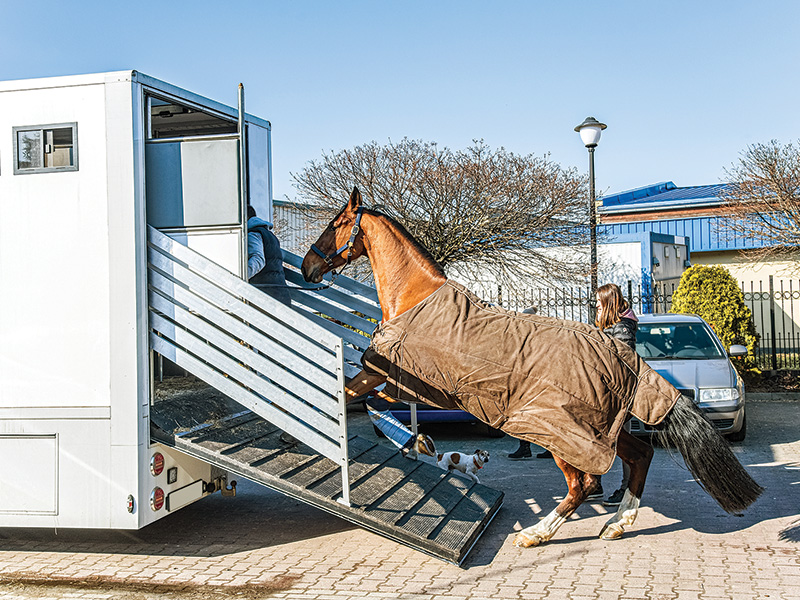
Being a prey animal, the horse that rushes into or out of the trailer is exhibiting a flight response to escape a perceived fearful situation. Photo: Dreamstime/Oleksii Yaremenko
5. Smooth out your communication. Aids must be distinct for your horse to discern what you mean — confusion stirs up tension. However, clarity shouldn’t be confused with abruptness. Assertive signals will startle your horse. Gradually increase pressure, especially in a busy, unfamiliar environment when the horse is wide-awake. Often, we overreact when our own adrenaline is elevated. As a judge, I wince as competitors spill into lope transitions, or surprise a horse with too much leg to start a turn on the forehand. A horse on alert calls for a measured response.
Related: What is Contact? And Do Riders Really Need It?
6. Avoid skipping training steps. Time restraints and eagerness tempt us to skip a building block or two in a horse’s training foundation. However, winging it is a waste of time. Why? Because slow and steady inevitably wins the race.
In visualizing my lesson plan, I’ll consider the ultimate skills horse and rider need to reach their goals, and each block or logical piece to building those skills.
For example, a flying change is assembled from building blocks of repetitions: leg yields, lateral movement of shoulders and haunches, counter-canter. It could take a couple of months to build the stress-free lead change.
Skipping steps may mean having to disassemble and rebuild your horse’s understanding and confidence.
7. Don’t practice hurry. Slow the legs, slow the thinking is one of my favourite coaching lines. With every dash through a show in-gate or hastily executed trail gate, and each time we let the horse express their flight response, we confirm the fear. Practice makes perfect — every time you let your horse rush, you’re teaching him to rush.
8. Stronger bits are not the answer. When a horse is stressed, he tunes out secondary stimuli such as rein pressure. It’s not that he’s developing a hard mouth; rather, he just switches off. The key is to show your horse what you DO want. Apply the slowing aids, acknowledge any shortening in his step, and reward by immediately relaxing the pressure. A hint that he’s on the right track lets some pressure out so your horse can think.
Related: Does Your Horse Have a Hard Mouth or Hard Mind?
9. Practice waiting in the ordinary moments. It’s worth the investment to train a horse to wait. Pause and step back before walking through a gate or on to a trailer. Wait before walking away from the mounting block or launching into your lunging circle. Patience spills over into other areas of training.

Practice waiting when doing ordinary things like walking through a gate or leaving the barn. The benefits of training your horse to wait will spill over into other areas of training. Photo: Shutterstock/Fuen30
10. Repetition. Most horses learned to rush through repetition rather than a single traumatic experience, and it’ll take repetition to unlearn it. For example, if your horse scoots into his stall, habituate him to the entry and exiting routine by using the door opening as a training spot: approach and back; part way through and back.
It may take many repetitions of quietly halting and waiting on approach to a jump or when a horse accelerates into a flying change. Changing behaviour is like creating a new pathway in place of a well-trodden one.
Rushing in the Show Ring – Keeping a Lid on it
While judging at a recent exhibition horse show, I scored more “speed” classes than usual — jumpers on one day, barrels and poles the following day, and a timed obstacle “Extreme Cowboy” event the next.
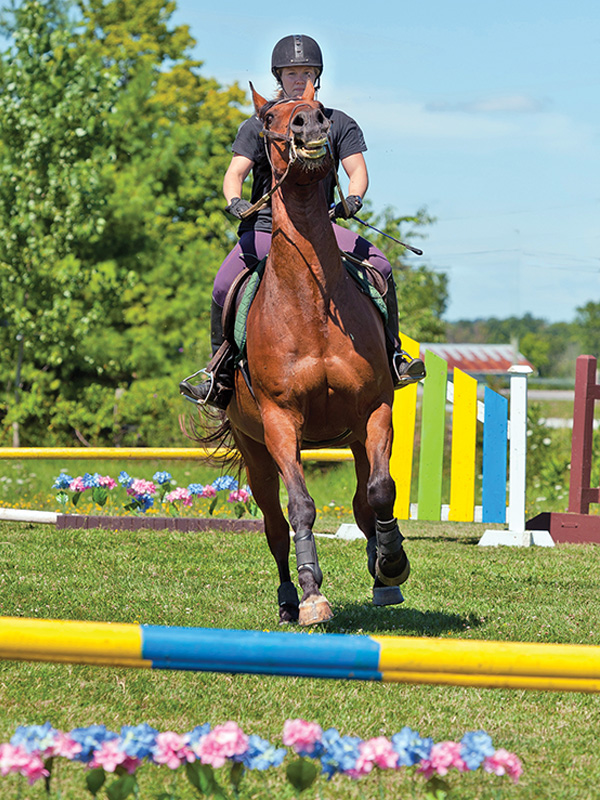
Tension invites mistakes. A tense horse rushing the jumps with his head elevated is not focusing on his rider’s cues. Photo: Clix Photography
Clearly, some riders had put in hours developing a plan — practicing the skills, lines, and turns of their discipline to shave precious seconds.
But others had not.
With speed comes excitement — a surge of adrenaline — in both horse and human. Messages from rider to horse get muddled when either is distracted or wound up. A rider who is focused on winning can get so caught up in the moment and cheers of the spectators that they’re not mindful of the cues they’re relaying to their horse. Because adrenaline triggers the flight response in a prey animal, a horse in flight-mode is unable to decipher and respond to the “code” their rider’s speaking.
That’s when things go wrong in the show ring, and without a doubt, haste makes waste. Tension invites mistakes. In speed events, every little resistance will cost precious time!
Related: Horse Competition - Are You Performing in the Zone?
Moreover, the horse begins to associate tension with the show ring. Ring-wise becomes ring sour. Balking at the gate becomes bolting through it. As a judge it’s a common sight to see a tense horse approaching the next obstacle counter-bent with head high, not able to see and size up the obstacle until almost on top of it.
Jumper courses, barrel patterns, or extreme obstacle races, when working with “speed riders” in clinics or lessons I’ll slow everything down to do a system check. I’ll look for specific spots on course when the horse is resisting or confused by the rider’s cues. Once the rider clarifies her signals — hand, leg, and seat aids — she’s speaking in a code the horse understands, even when navigating at speed.
Speed under control is quicker than speed out of control. And slower is faster in building control and keeping a lid on equine tension.
Related: How to Keep Your Horse from Rushing the Jumps
Related: When Horses Behave Badly
Main Photo: Canstock/Zuzule



